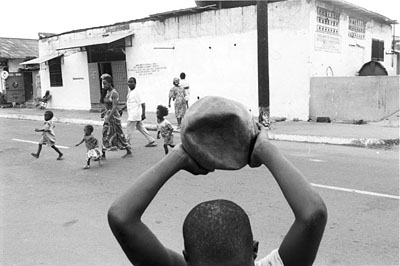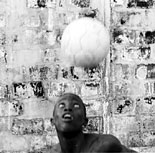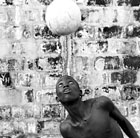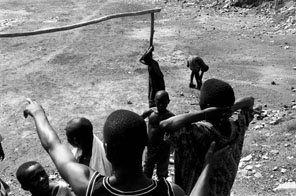|
Photographs by
Tim Hetherington. Page 4/6. |
||||||||||||
 |
||||||||||||
 |
||||||||||||
 |
||||||||||||
 |
||||||||||||
| Training takes place every day, and many hope that this will offer them new avenues of opportunity. With the knowledge that they train for a better future, members push themselves even harder. On the sidelines, younger children appear spellbound, getting a better education than these players ever had. | ||||||||||||
| Liberian football does not read just as a cosy image of success. It also highlights the hardship of life here. Years of violence bubble through in the primitive methods of crowd control, and poverty is never far beneath the surface. Players still need to share the basic commodities that we in the West take as a right, and even with their punctured ball mended, the young cannot afford to refill it with air from the gas station. |
||||||||||||
| Sport helps to break the mundane cycle of survival. In the notorious Westpoint district of Monrovia, kids while away the hours playing basketball. Their dilapidated court demonstrates a resourcefulness crafted through years of conflict. By Popo Beach, local girls gather to play a sport called kick-ball. In neighboring Clara Town an army band still draws the kids with its attractive fanfare, but when football hero George Weah revisits the town of his roots, hundreds turn out to greet him at the community pitch. |
||||||||||||
 |
||||||||||||